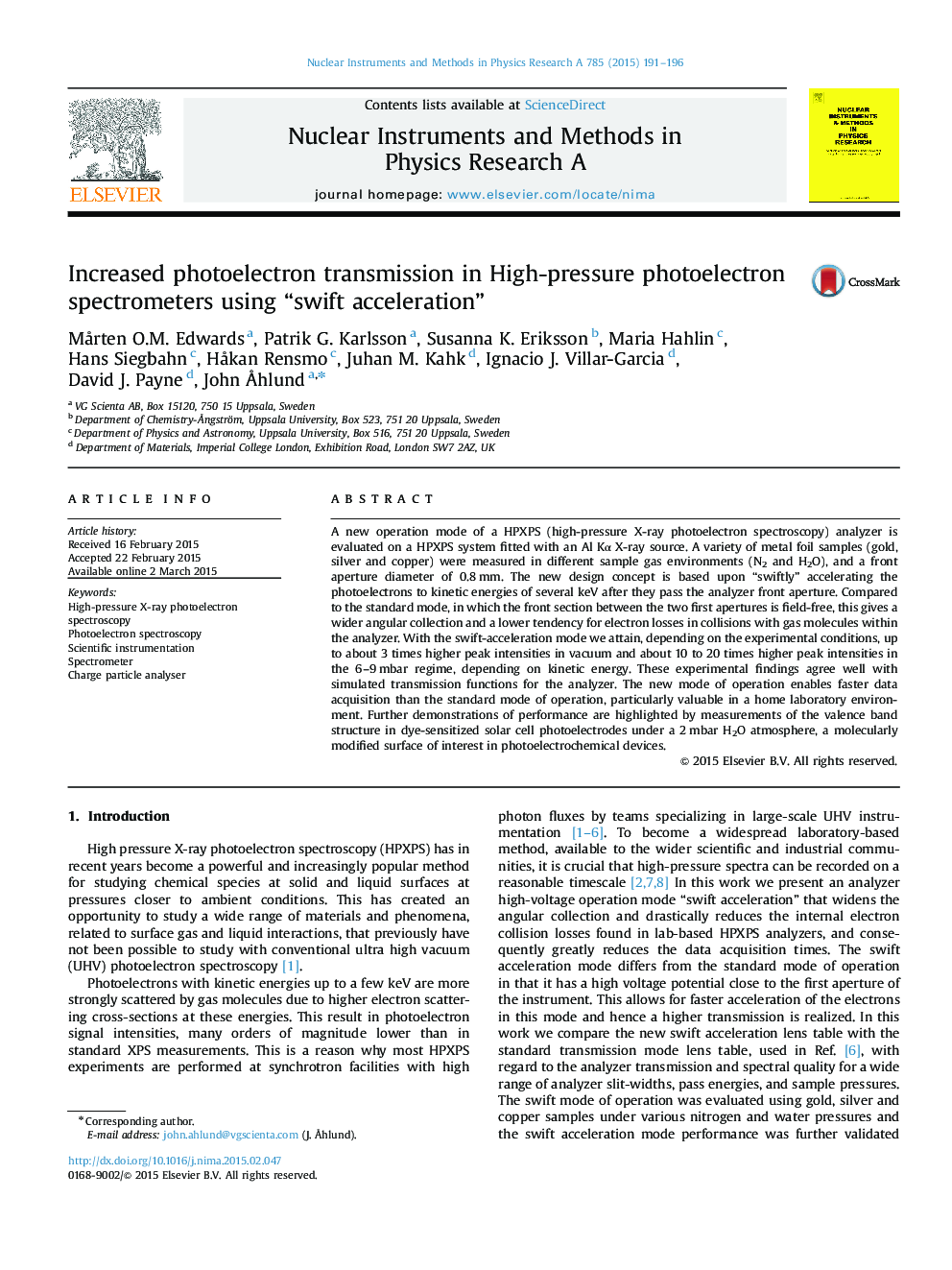| Article ID | Journal | Published Year | Pages | File Type |
|---|---|---|---|---|
| 8173600 | Nuclear Instruments and Methods in Physics Research Section A: Accelerators, Spectrometers, Detectors and Associated Equipment | 2015 | 6 Pages |
Abstract
A new operation mode of a HPXPS (high-pressure X-ray photoelectron spectroscopy) analyzer is evaluated on a HPXPS system fitted with an Al Kα X-ray source. A variety of metal foil samples (gold, silver and copper) were measured in different sample gas environments (N2 and H2O), and a front aperture diameter of 0.8 mm. The new design concept is based upon “swiftly” accelerating the photoelectrons to kinetic energies of several keV after they pass the analyzer front aperture. Compared to the standard mode, in which the front section between the two first apertures is field-free, this gives a wider angular collection and a lower tendency for electron losses in collisions with gas molecules within the analyzer. With the swift-acceleration mode we attain, depending on the experimental conditions, up to about 3 times higher peak intensities in vacuum and about 10 to 20 times higher peak intensities in the 6-9 mbar regime, depending on kinetic energy. These experimental findings agree well with simulated transmission functions for the analyzer. The new mode of operation enables faster data acquisition than the standard mode of operation, particularly valuable in a home laboratory environment. Further demonstrations of performance are highlighted by measurements of the valence band structure in dye-sensitized solar cell photoelectrodes under a 2 mbar H2O atmosphere, a molecularly modified surface of interest in photoelectrochemical devices.
Related Topics
Physical Sciences and Engineering
Physics and Astronomy
Instrumentation
Authors
MÃ¥rten O.M. Edwards, Patrik G. Karlsson, Susanna K. Eriksson, Maria Hahlin, Hans Siegbahn, HÃ¥kan Rensmo, Juhan M. Kahk, Ignacio J. Villar-Garcia, David J. Payne, John Ã
hlund,
